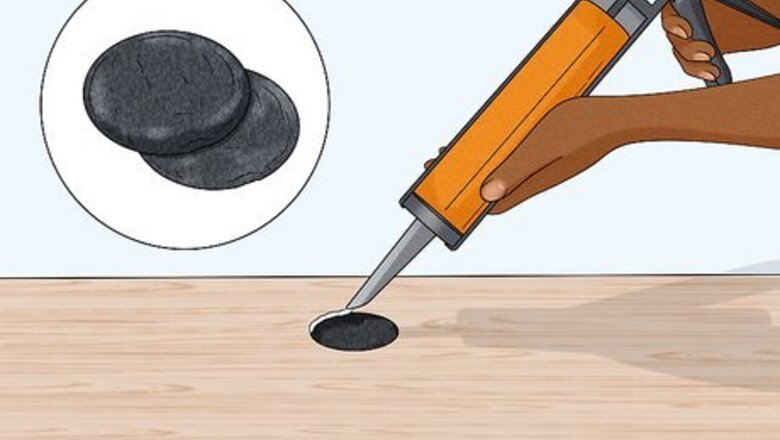
views
Exterior Holes
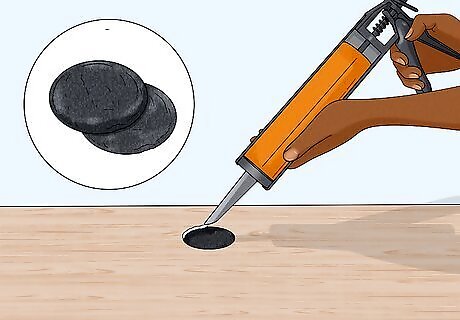
Fill small holes with steel wool and seal around the wool with caulk. Buy steel wool online or at a hardware store. Stuff the steel wool into the hole to cover it completely, then put caulk around the edges to keep the mice from simply pulling it out.
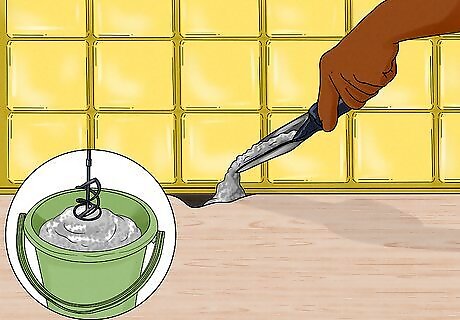
Close larger holes with metal sheeting or cement. Look for a cement mix online or at your local hardware store, or buy metal sheeting that you can affix over the opening. Measure the hole before you buy your materials so you'll know how much you need. Make sure you haven't left any gaps in the cement or sheeting that a mouse could still get through. You can also use hardware cloth or lath screen (backing material for plaster) to cover the holes. Just don't use wood, which rodents can chew through.
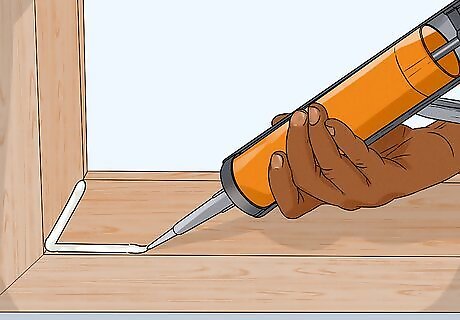
Seal cracks around doors and windows with caulk or foam. Go around the outside of your house and make sure all of your doors and windows fit tightly. If you see any gaps, use caulk or foam to close them up. It'll not only help keep your home cleaner and more energy-efficient but also keep mice and other pests from getting in. During cold weather, you can find outside cracks from inside your home. If you feel a draft, a mouse could use that crack as an entry point. Go outside and seal it up.
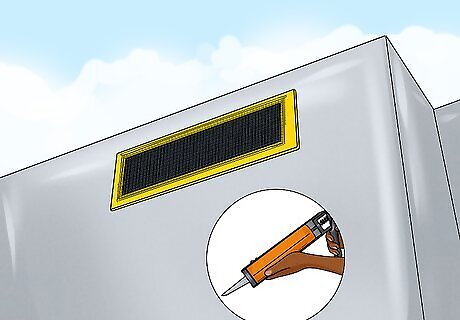
Cover vents with steel screens to keep rodents out. Some holes on the outside of your home are meant to be there. Unfortunately, these holes also present opportunities for rodents to enter. Buy steel screens at your local hardware store or online and cover the vents with these. That way, the vent will still work properly but won't serve as a doorway for outdoor pests. Use caulk to seal the screen in place if you can't use the vent cover itself to hold the screen on. Check roof vents and chimneys as well. Install screens so rodents can't get through these holes. Robert Corrigan Robert Corrigan, Urban Rodentologist Effective rodent control requires closing entry points mice can squeeze through and use durable materials they can't gnaw through. Regular inspection and maintenance of any gaps are essential to prevent persistent mice from entering.
Interior Holes
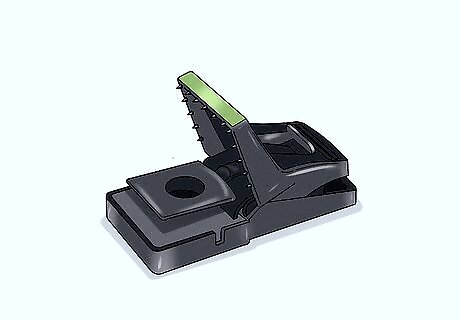
Trap mice inside your home before sealing up the holes. Look for signs that mice have entered your home, such as mouse droppings. If you have mice living in your home, sealing up the interior holes could trap them in your walls—and create a terrible stench when they die. Use regular mouse traps to eliminate the intruders before closing interior mouse holes. If there aren't any visible holes, drill a small hole in your wall and place a loaded trap right in front of it. Set snap traps with a pea-sized drop of peanut butter perpendicular to the wall, so they form a "T" shape with the wall. You can also put them anywhere you see signs of frequent rodent activity, including droppings or nesting materials. If you aren't successful in trapping the rodents on your own, contact a local exterminator to take care of the problem for you.
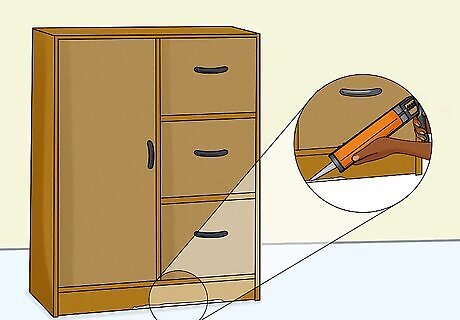
Caulk up holes in and around cabinets and doors. Buy a tube of caulk online or at your local hardware store and go around your home looking for any cracks. Pay particular attention to the base and backs of cabinets where they meet exterior walls. If you have a fireplace, check for possible holes in that area. The warmth makes it an attractive area for rodents to nest. When in doubt, run caulk over any crevices you see. Even if a rodent can't get through it now, it might expand if it isn't sealed.
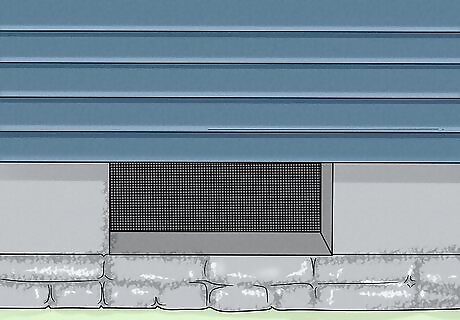
Cover vents and drains with steel screens. Even if you've already covered the exterior opening of a vent or drain, cover the interior opening as well. Floor drains in basements, garages, or laundry rooms can be easy access points for rodents. Typically, you can place the screen directly under the vent or drain covering and seal it in place with the cover itself.
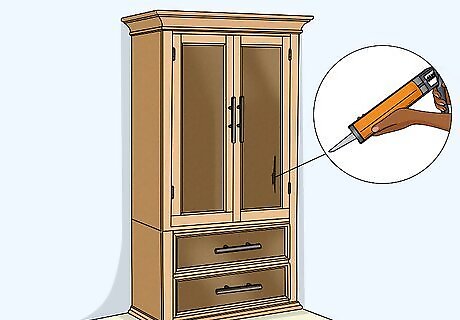
Seal cracks along baseboards and in closets. Use sealant or caulk if your baseboards aren't completely flush with the floor. Check for gaps also well the wall meets the floor in the backs of closets, particularly around the corners. Check your attic and basement as well. Pay close attention to exterior walls, as they can potentially give rodents direct entry into your home.
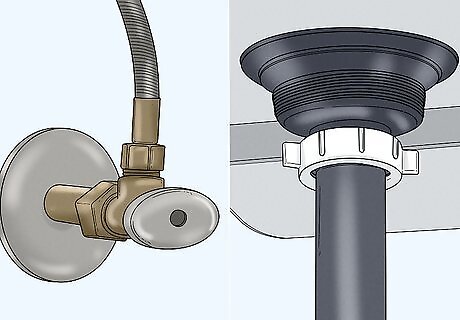
Fit sheet metal around pipes to cover gaps. Check the pipes under your sinks and elsewhere in your home. If there are gaps between the pipe and the surrounding wall or cabinet, fit a piece of sheet metal around the pipe and seal it in place against the wall or cabinet. Your local hardware store can cut the metal for you to fit the space that you need. Simply measure the pipe to make sure the hole cut in the sheet metal will fit around it.
Prevention
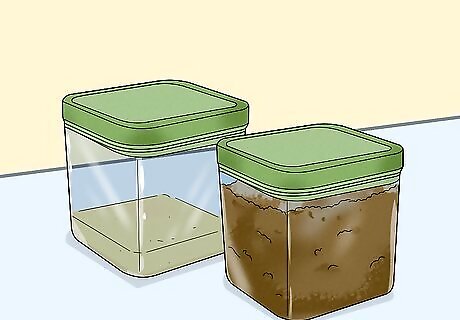
Eliminate food sources for rodents. Store all food, including pet food, in airtight containers. Clean up any spills or messes promptly so rodents won't smell food in your home. Wash dishes and utensils as soon as possible after use rather than letting them pile up in the sink. Any kind of food left out overnight will attract rodents. If you've had a problem with rodents in the past, don't leave out pet food overnight. Return any uneaten food to the airtight container, then replace it in the morning. Rodents tend to get their food close to where they live, so eliminating potential food sources around your home is the best way to prevent a rodent infestation.
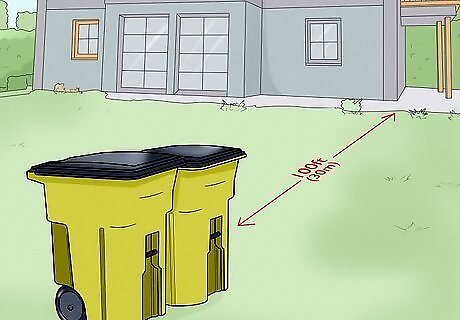
Move exterior trashcans away from your home. Keep trashcans at least 100 feet (30 m) away from the exterior walls of your home to avoid attracting rodents. Use closed containers so rodents and other creatures can't get to the trash inside. If you have a compost pile, keep it at least 100 feet (30 m) away from your home as well. Keep your trash in rodent-proof bins and clean them with soap and water frequently.
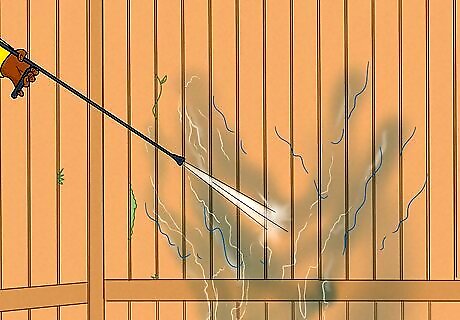
Remove weeds and brush around your home. Any weeds and brush around the walls of your home provide great nesting areas for rodents. Sweep or rake brush frequently and keep it away from the exterior walls of your house. If you have a yard, keep your grass cut so that it's shorter than 12 inches (30 cm). Keep any shrubbery within 100 feet (30 m) of your home neat and trimmed short.
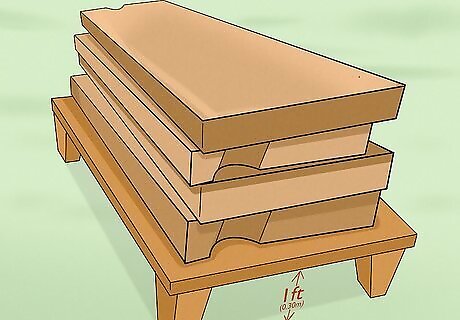
Raise woodpiles and garbage cans at least 1 ft (0.30 m) off the ground. Any woodpiles or garbage cans on the ground also provide nesting areas for rodents and other pests. You can buy stands or holders online or at your local hardware or home improvement store or you can build your own. Make sure the area under the woodpile or garbage can is also kept clear. Any brush or debris will only exacerbate your problem.
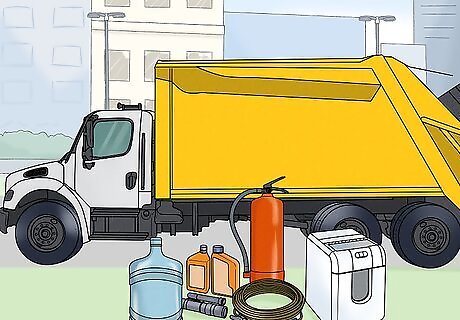
Haul away any junk cars and appliances sitting in your yard. Call a local junk service to have these items hauled away, then clear any brush or debris from that part of your yard. This removes potential nesting spots for rodents. If your local government doesn't have a service to haul away junk, contact several junk haulers to get estimates.
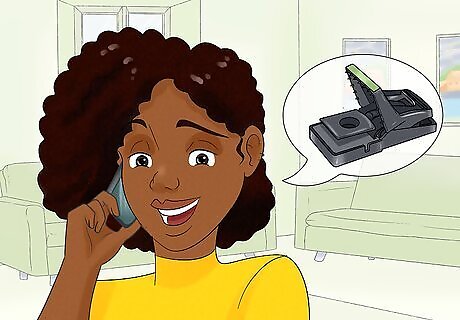
Call a professional exterminator if prevention isn't effective. If you've done everything you can to prevent mice from taking up residence in your home and you're still seeing signs of them, a professional exterminator can help. The mice might be coming in through an opening that you can't see, or they might be trapped in your home and unable to get out to go someplace else. Have exterminators from several different companies come out to evaluate the situation and give you an estimate. That way, you can compare and choose the one that best suits your needs and your budget.


















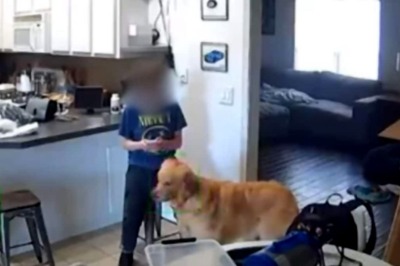
Comments
0 comment